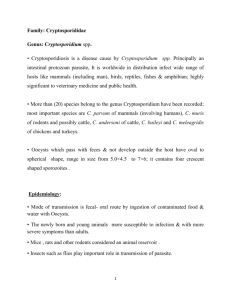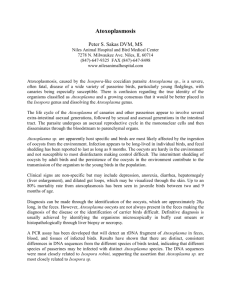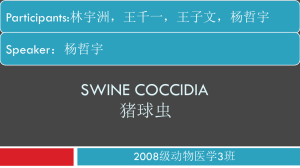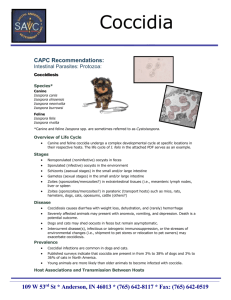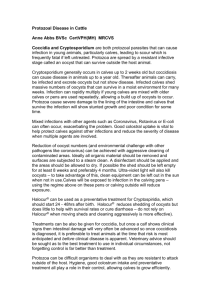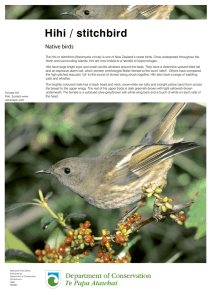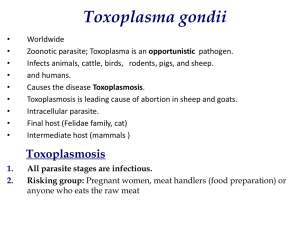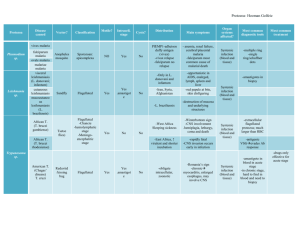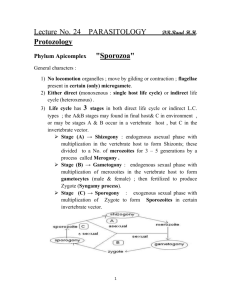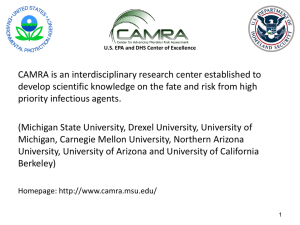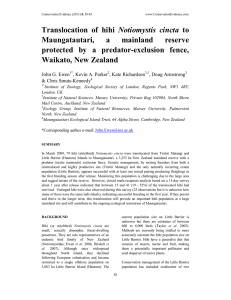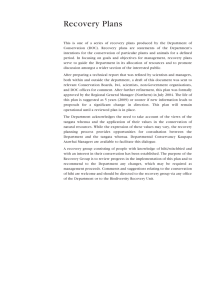A study of coccidial parasites in the hihi (Notiomystis cincta) Master
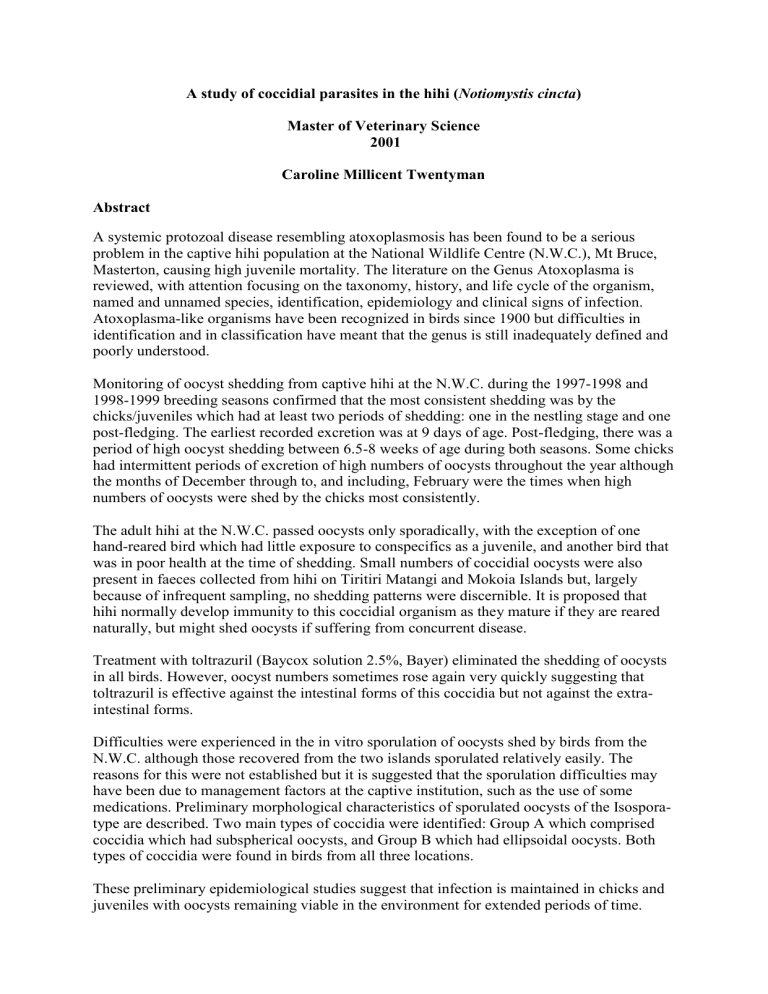
A study of coccidial parasites in the hihi (Notiomystis cincta)
Master of Veterinary Science
2001
Caroline Millicent Twentyman
Abstract
A systemic protozoal disease resembling atoxoplasmosis has been found to be a serious problem in the captive hihi population at the National Wildlife Centre (N.W.C.), Mt Bruce,
Masterton, causing high juvenile mortality. The literature on the Genus Atoxoplasma is reviewed, with attention focusing on the taxonomy, history, and life cycle of the organism, named and unnamed species, identification, epidemiology and clinical signs of infection.
Atoxoplasma-like organisms have been recognized in birds since 1900 but difficulties in identification and in classification have meant that the genus is still inadequately defined and poorly understood.
Monitoring of oocyst shedding from captive hihi at the N.W.C. during the 1997-1998 and
1998-1999 breeding seasons confirmed that the most consistent shedding was by the chicks/juveniles which had at least two periods of shedding: one in the nestling stage and one post-fledging. The earliest recorded excretion was at 9 days of age. Post-fledging, there was a period of high oocyst shedding between 6.5-8 weeks of age during both seasons. Some chicks had intermittent periods of excretion of high numbers of oocysts throughout the year although the months of December through to, and including, February were the times when high numbers of oocysts were shed by the chicks most consistently.
The adult hihi at the N.W.C. passed oocysts only sporadically, with the exception of one hand-reared bird which had little exposure to conspecifics as a juvenile, and another bird that was in poor health at the time of shedding. Small numbers of coccidial oocysts were also present in faeces collected from hihi on Tiritiri Matangi and Mokoia Islands but, largely because of infrequent sampling, no shedding patterns were discernible. It is proposed that hihi normally develop immunity to this coccidial organism as they mature if they are reared naturally, but might shed oocysts if suffering from concurrent disease.
Treatment with toltrazuril (Baycox solution 2.5%, Bayer) eliminated the shedding of oocysts in all birds. However, oocyst numbers sometimes rose again very quickly suggesting that toltrazuril is effective against the intestinal forms of this coccidia but not against the extraintestinal forms.
Difficulties were experienced in the in vitro sporulation of oocysts shed by birds from the
N.W.C. although those recovered from the two islands sporulated relatively easily. The reasons for this were not established but it is suggested that the sporulation difficulties may have been due to management factors at the captive institution, such as the use of some medications. Preliminary morphological characteristics of sporulated oocysts of the Isosporatype are described. Two main types of coccidia were identified: Group A which comprised coccidia which had subspherical oocysts, and Group B which had ellipsoidal oocysts. Both types of coccidia were found in birds from all three locations.
These preliminary epidemiological studies suggest that infection is maintained in chicks and juveniles with oocysts remaining viable in the environment for extended periods of time.
Further work on oocyst shedding by adults during the breeding and oocysts viability in the environment is required in order to confirm this hypothesis. Transmission studies using starlings as recipient birds for both starling and hihi oocysts were not completed because of the unavailability of appropriate infective material at the required time. Another study using a single hihi as the recipient of sporulated hihi oocysts was also not completed because of the death of the hihi due to a fungal infection. A transmission study where sporulated hihi oocysts were inoculated into zebra finches, was completed and there was no evidence of infection, supporting the belief that these coccidia are species-specific.
The gross and histological findings on necropsy of 12 cases of coccidial infection in hihi from the N.W.C. are described in detail including the locations of the various coccidial forms within the body. These findings are compared with cases of Atoxoplasma and Atoxoplasmalike infections in birds recorded in the literature. The most outstanding feature of the infection in hihi is the intestinal pathology which involves extreme thickening of the lamina propria with an overwhelming invasion by coccidial forms into the lamina propria and the intestinal epithelial cells. No atoxoplasmosis cases in other avian species exhibit similar intestinal pathology. Although there are some common aspects in the hepatic and splenic pathology, and in the tissue location of the different coccidial life cycle stages, there is currently insufficient consistent similarity to justify placing the hihi coccidia in the Genus
Atoxoplasma. The taxonomic classification of this coccidia therefore remains uncertain.
